the garden dirt the garden dirt
FOR FRIENDS OF BIRMINGHAM BOTANICAL GARDENS



A new sculpture installation in the Jemison Lily Garden reflects the interconnectedness of our community and the natural world
Show your Friends of Birmingham Botanical Gardens membership card and enjoy 10% off regularly priced purchases at The Gardens Café by Kathy G and these local nurseries, garden centers, and flower shops.
Certain restrictions may apply. Please visit bbgardens.org/membership for details.
• DOROTHY MCDANIEL’S FLOWER MARKET •
• FARMSTAND BY STONE HOLLOW •
• HOUSE PLANT COLLECTIVE •
• LEAF & PETAL AT THE GARDENS •
• MYERS PLANTS & POTTERY •
• PETALS FROM THE PAST •
• SHOPPE/GENERAL •
• SWEET PEAS GARDEN SHOP •
• VIVATIA PLANT CARE SERVICES •
• WILD THINGS •


Emily Bowron Chair
wally Evans immEdiatE Past Chair
KirK ForrEstEr sECrEtary d�C Coston trEasurEr
dEriCK BEldEn Chair oF CommuniCations & marKEting
EvElyn JonEs Chair oF dEvEloPmEnt
CarolinE littlE Chair oF EduCation & Community EngagEmEnt
John smith t Chair oF govErnanCE
liBBa vaughan Chair oF govErnmEnt rElations
lEE mClEmorE Chair oF oPErations
Maggie Brooke
Sharon Deep-Nelson
Eleanor Estes
Sid Evans
Wendy Evesque
Nicole Faulk
David Germany
Leigh Haver
Janet Kavinoky
Anne Sanders Rand
Sarah Slaughter
Desmond R. Layne G. Ruffner Page, Jr.
Martha Emmett Sims
Joanice Thompson
Larry D. Thornton, Sr. Jesse Vogtle, Jr.
Sharon Walker
Ginny Willings
Mazie Bryant, Junior Board President
The Friends of Birmingham Botanical Gardens seeks to protect, nurture, and share the wonders of Birmingham Botanical Gardens. We are dedicated to serving the Gardens, serving the community, serving our visitors, and inspiring a passion for plants, gardens, and the environment.
Tom Underwood.....................................................Executive Director
Julia Adams Horticulturist—Japanese Garden
Stephanie Banks Chief Financial Officer
Katelyn Bahr Horticulturist—Specialty Gardens
Dawn DeFrank Donor Services Coordinator
Amelia Haas Office Coordinator
Ellen Hardy Education Program Coordinator
Penney Hartline Director of Development
Cassia Kesler Director of Communications & Marketing
Hope Long Director of Library Services
Tina Nelson Accounting Clerk
Sebastian Ortiz Munoz…............Communications & Marketing Associate
Kendra Poleshek Education Associate
Drew Rickel Donor Relations Officer
Kensley Sandlin Development Associate
Rebecca Stivender Director of Education & Community Engagement
Emma Thompson Volunteer Coordinator
Keith Turney Senior Horticulturist—Kaul Wildflower Garden
Jane Underwood Director of Gardens Support
Editor: Cassia Kesler
Art & Design: Ellen Padgett
Cover & Lead Photos: Carmen Michael
Contributors: Susan Alison, Dawn DeFrank, Ellen Hardy, Penney Hartline, W endy Wallace Johnson, Hope Long, Carmen Michael, Sebastian Ortiz Munoz, Kendra Poleshek, Drew Rickel, Jane Underwood, Graham Yelton
©2024 Friends of Birmingham Botanical Gardens. All rights reserved. 2612 Lane Park Road, Birmingham, AL 35223 205.414.3950 | bbgardens.org communications@bbgardens.org
A facility of the Birmingham Park and Recreation Board, Birmingham Botanical Gardens is the result of a public/private partnership between the City of Birmingham and the nonprofit Friends of Birmingham Botanical Gardens, a mission-driven membership organization that seeks to protect, nurture, and share the wonders of the Gardens. We hope you enjoy this issue of the Friends’ award-winning quarterly publication, The Garden Dirt. Thank you for visiting and supporting the Gardens! Friends of Birmingham Botanical Gardens practices a policy of equal opportunity and equal access to services for all persons regardless of race, creed, color, national origin, age, disability, veteran status, orientation, or gender identity.
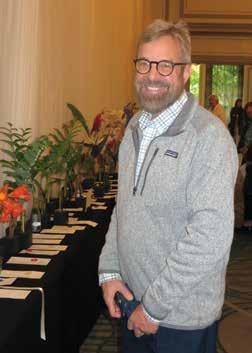
Dear Friend,
Throughout my career in public horticulture, I feel so very fortunate to have had the opportunity to work with so many remarkable people and do so many amazing things. My experiences here in Birmingham are no exception, and this spring’s activities and events have been nothing short of extraordinary.
The year started with our annual member celebration and John A. Floyd Jr. lecture. What a wonderful event that was with Southern Living’s Steve Bender, aka “the Grumpy Gardener,” highlighting the evening. From there we went on to an engaging evening with Shaun Spencer-Hester, who enlightened us with insights into her work at the Anne Spencer House & Museum. Next up was our annual Spencer Lecture, when we learned about the life and garden passions of the renowned Bunny Mellon with Thomas Lloyd and Bryan Huffman. All of this led up to our Spring Plant Sale, an event that skillfully melds our passion for plants with the all-essential work of fundraising.
As though all these things weren’t enough, the Garden Conservancy came to town with a truly remarkable “Birmingham Garden Weekend” in early May. Last held here in 2009, the Garden Conservancy’s Open Days tours of private gardens gave us a rare peek at some of the most exceptional horticulture in our area as well as the chance to gain insights directly from garden owners and designers. The highlight of the weekend was the premiere of The Garden Conservancy’s newest documentary film, “A Garden in Conversation: Louise Agee Wrinkle’s Southern Woodland Sanctuary.” Playing to a packed house at the historic Virginia Samford Theatre, the film was informative, inspirational, and touching—and a welldeserved tribute to one of our own local heroes of horticulture. A fascinating panel discussion following the screening made the experience even more special.
I hope you will agree that the opportunities here in Birmingham for plant and garden enthusiasts are second to none. We are so honored and proud to be a part of carrying on this long-standing tradition. The momentum continues, and more opportunities lie ahead: In this issue of The Garden Dirt, we are excited to tell the story of a new sculpture in the Gardens, welcome our summer interns, and share a profile of yet another local standout—Bill Ireland, our 2024 Antiques at the Gardens honoree.
Thank you for being an important part of our work. Your great generosity, enthusiasm, and tireless efforts help us to continue to grow and flourish together.
 Tom Underwood Executive Director, Friends of Birmingham Botanical Gardens
Tom Underwood Executive Director, Friends of Birmingham Botanical Gardens
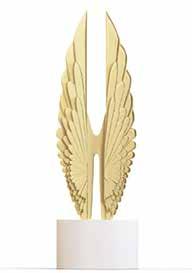
We are thrilled to announce that our Communications and Marketing team has won a Gold Hermes Creative Award for the Winter 2023-24 issue of The Garden Dirt. This award is a testament to the hard work and dedication of our entire team in creating innovative and compelling content. We are proud to be recognized for our efforts, and we are committed to delivering high-quality publications that reflect the warmth and vitality of the Friends. We look forward to sharing more exciting projects with you in the future!
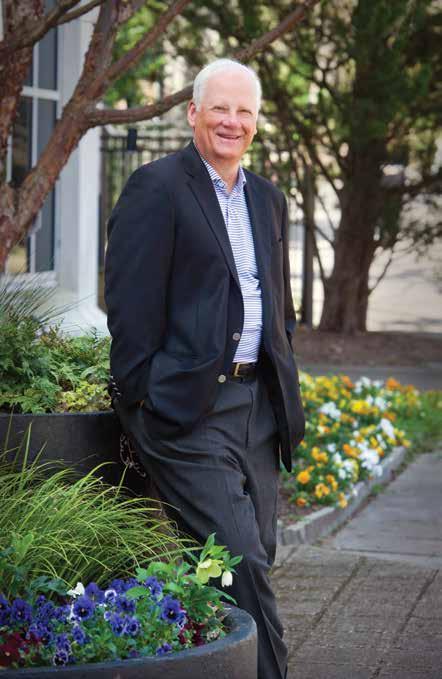
Bill Ireland jokingly calls himself a “reluctant gardener,” but as he scrolls through photos of flowers in bloom and freshly cut boxwoods in the established English-style gardens at his recently purchased Redmont Park home, it’s clear that an appreciation for gardens was passed down from his mother Fay, a prodigious gardener with deep roots in the Birmingham Botanical Gardens history.
“What they don’t tell you about gardening is that it’s never done,” said Bill. “There is always something that needs attention, whether it be upkeep or adding and subtracting from the landscape. Just because you inherit a garden, doesn’t mean that the job is done,” he mused.
It’s much like that with his family’s philanthropic work, in that he sees himself as inheriting and representing a broader Ireland legacy. “As honoree, I hope it to be a celebration of my mother and the philanthropic legacy of the Ireland family. My function is carrying forward that legacy and honoring their passion and vision.
“My family—my grandmother Kitty; my Aunt Mallie; my cousins Kacy, Mallie, and Nonie; and especially my mother, Fay—they’ve all been supporters of the Gardens, so I’m really continuing and preserving a family tradition.”
Visitors to the Birmingham Botanical Gardens see the impact of the Ireland family in obvious ways—the Ireland Iris Garden, the Ireland Old-Fashioned Rose Garden, the Ireland Room ...but they may not notice the more subtle influences. For example, the turkey statue in the Ireland Iris Garden and the heron sculpture “Interlude” in the Hill Garden are both gifts to the Friends from the Ireland family and a nod to Bill’s father’s love of Alabama wildlife and wildlife art.
But Fay’s contributions have breathed life into the Gardens. The Shumard oaks at the Gardens’ entrance were donated by Fay in honor of her grandchildren. Other contributions were even more personal. “Mother loved digging in the dirt,” says Bill. “You could often find her working in the potting shed with other volunteers and City employees. That’s what she liked the most.”
Many perennials in the Gardens are plants that Fay gifted to the Gardens. The popular Fall Plant Sale evolved from the Fall Fiesta, started by Fay. She also lent her talents to leadership roles, serving on the master plan committee throughout most of the 1980s, and later by serving on the board of directors.
Bill continues to honor his mother’s legacy by serving multiple years on the board of directors and the executive committee for the Friends of the Birmingham Botanical Gardens.
“I come from the perspective that the Gardens are great for Birmingham. They are an asset for economic development, and certainly for quality of life here.
I understand that the better the Gardens become, the better Birmingham becomes,” said Bill. “So many people walk the Gardens and enjoy it as an attraction. If they are local, it enriches their lives; if they are visiting, it enriches their opinion of Birmingham—it is another jewel that makes Birmingham a better place.”
He continued, “Any improvements made to the Gardens will improve Birmingham. My father saw that. He was very community-oriented—and supporting the Gardens was supporting my mother’s vision.”
The Irelands’ philanthropic roots run deep. “My grandmother Kitty (Katharine Ireland) grew up during the Depression. Her sons, Glenn and my father, ‘Little Bill,’ pulled her into philanthropy from a place of hardship, and that brought her joy. I believe philanthropy is a learned behavior. Someone has to model that for you.”
Bill said his models were exceptional. “Dad and Glenn typified the moniker of the ‘Greatest Generation,’ becoming the driving forces in philanthropy in our family, and of course, that was taught to the next generation. I am proud to carry that torch for my family.
“It’s not by happenstance that all of the things that I work on philanthropically are extensions of my parents’ passions,” said Bill. “I’m also currently raising money for The Nature Conservancy—my father was one of the premier conservationists in Alabama. Through the Ireland Opportunity Fund, we are buying and protecting
“Not only is this event an important fundraiser for the Gardens, but it also serves to showcase this oasis in our city. There is potential to be unleashed that will be ignited by people’s passion for the Gardens.”
—BILL IRELAND
strategic and vulnerable pieces of land to preserve key habitats for endangered species or important plants. That’s conservation in perpetuity, which I think is very valuable. And it’s complementary to the Gardens and the work the Gardens does to showcase Alabama’s biodiversity.”
Like his garden at his new home, Bill knows that work at the Birmingham Botanical Gardens will never be “done.” He believes that the best days for the Gardens lie ahead. “I see wonderful things on the horizon for the Gardens. We have the opportunity to elevate the Gardens’ stature as one of the premiere gardens in the Southeast, if not the nation.
“The devotion that my mother had for the Gardens is shared by so many,” he said. “The many hours invested by the team of chairs, volunteers, and staff to bring Antiques at the Gardens to fruition demonstrates that.”
“I appreciate the kind recognition of my family’s support of the Gardens. It’s meaningful. Not only is this event an important fundraiser for the Gardens, but it serves to showcase this oasis in our city. There is potential to be unleashed that will be ignited by people’s passion for the Gardens.”
The Friends of Birmingham Botanical Gardens is pleased to welcome two new staff members!

KENDRA POLESHEK serves as our education associate for adult and personal enrichment programs. In her role, Kendra is developing a structure for adult programming and plans seasonal classes, workshops, and talks at the Gardens. She develops and organizes guided tours and serves as a member of the Interpretation Committee. Kendra has a background in design education and arts management. She taught fulltime in the design department at the Ringling College of Art and Design in Sarasota, Florida for eight years and subsequently managed three different programs at the college. Growing up in a family of teachers and backyard gardeners, Kendra is thrilled to be a part of the education team at the Birmingham Botanical Gardens. She is passionate about learning and committed to making classes accessible and enriching for people of all interests and abilities.

KENSLEY SANDLIN joined our development team in April. In her role as Development Associate, she will be supporting our fundraising events, activities, and programs. Kensley holds a Bachelor of Fine Arts from the University of Montevallo and brings a passion for customer service, attention to detail, and quality events to the position. Her experience includes working as an admissions counselor at Birmingham-Southern College where she was involved in promoting opportunities in the arts to prospective students through on- and off-campus events. She has also assisted with theatrical programming and performances at the Birmingham Children’s Theatre and Red Mountain Theatre. Kensley is an admitted Disney fan and was honored to be selected to participate in the Disney College Program where she had the opportunity to hone her hospitality skills. Kensley is excited about joining the Friends team, and looks forward to being a part of the creative and collaborative processes that are integral to producing successful and engaging events for the Gardens' community.

A new sculpture installation in the Jemison Lily Garden reflects the interconnectedness of our community and the natural world
By SEBASTIAN ORTIZ MUNOZ • Photography by CARMEN MICHAEL AND GRAHAM YELTON Illustrations by RODNEY DAVIDSONIn 1980, when Birmingham Botanical Gardens updated its master plan and began developing new gardens, the seeds of creative placemaking began to take root. Creative placemaking—the dynamic approach that leverages the power of art, culture, and creativity— has transformed our garden spaces and strengthened our community bonds by bringing together artists, landscape designers, horticulturists, and community supporters to strategically shape a space’s physical and social character. Since that time, Birmingham Botanical Gardens has introduced more than 20 sculptures into various gardens— enhancing the spaces with art appropriate to each setting and within the tradition of garden-making. These sculptures offer visitors visual interest, curiosity, and dialogue. Acting as landmarks, focal points, and symbols, these sculptures
contribute significantly to the identity and character of the place.
In keeping with this tradition, a new bronze sculpture titled “Discovery,” now graces the Jemison Lily Garden featuring pollinator flowers adorned with delicate butterflies forever in flight. This sculpture joins its predecessors in enriching the Gardens and providing a space for gathering, inspiration, and contemplation.
The story of “Discovery” is one of interconnectedness and collaboration; it showcases not only nature’s symbiosis through its bronze pollinator plants and butterflies, but also the collaboration within our community towards a shared goal. “Discovery” reminds us that one cause can bring different partners from diverse sectors together to create something that enriches our community through mind, body, and soul.

In celebration of Margot Kessler Marx’s life, her family seeks to honor her memory at Birmingham Botanical Gardens. The inspiration for “Discovery” stems from a desire to honor the late Margot Kessler Marx, who was known for her deep affection and support for the Gardens. Mrs. Marx’s family, in collaboration with the Friends of Birmingham Botanical Gardens, sought to create a lasting tribute that reflected her love for butterflies. Inspired by her passion, the idea emerged to commission a sculpture in her honor, celebrating the beauty of these delicate creatures and highlighting the interconnectedness of the natural world.
Garden designer and former FBBG Associate Director of Gardens Support Molly Hendry played a crucial role in finding the location for the sculpture, as well as finding an artist to commission. Molly’s vision was to find a location where the sculpture could complement the garden’s design, offer layers of
interest, and act as a focal point to attract visitors.
“The Jemison Lily Garden was a natural garden for us to choose because it sits up on a hill and it’s challenging to invite people to go uphill. We thought if people see that something is up there, they are more likely to make that journey,” said Molly. With the location established, the next step for Molly was to find an artist who could breathe life into the donors’ and Friends’ shared vision. “I reached out to a friend at the Auburn Art Museum who gave me some pointers and guidelines on how to commission an artist. She also opened my eyes to the fact that this was a unique opportunity for us to find and highlight a young local artist,” said Molly.
Molly combed through various artist portfolios, news articles, and social media accounts until an article on an up-and-coming metal artist, Ajene Williams, caught her eye.
Ajene Williams is the senior artist in residence at Sloss Furnaces and Magic City Art Connection’s 2016 emerging artist of the year. If you’ve ever taken a stroll at City Walk, you’ve most likely seen
The story of “Discovery” is one of interconnectedness and collaboration; it showcases not only nature’s symbiosis through its bronze pollinator plants and butterflies but also the collaboration within our community toward a shared goal.

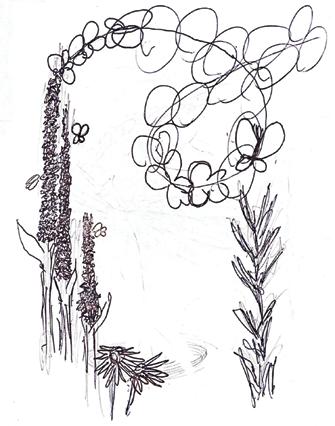
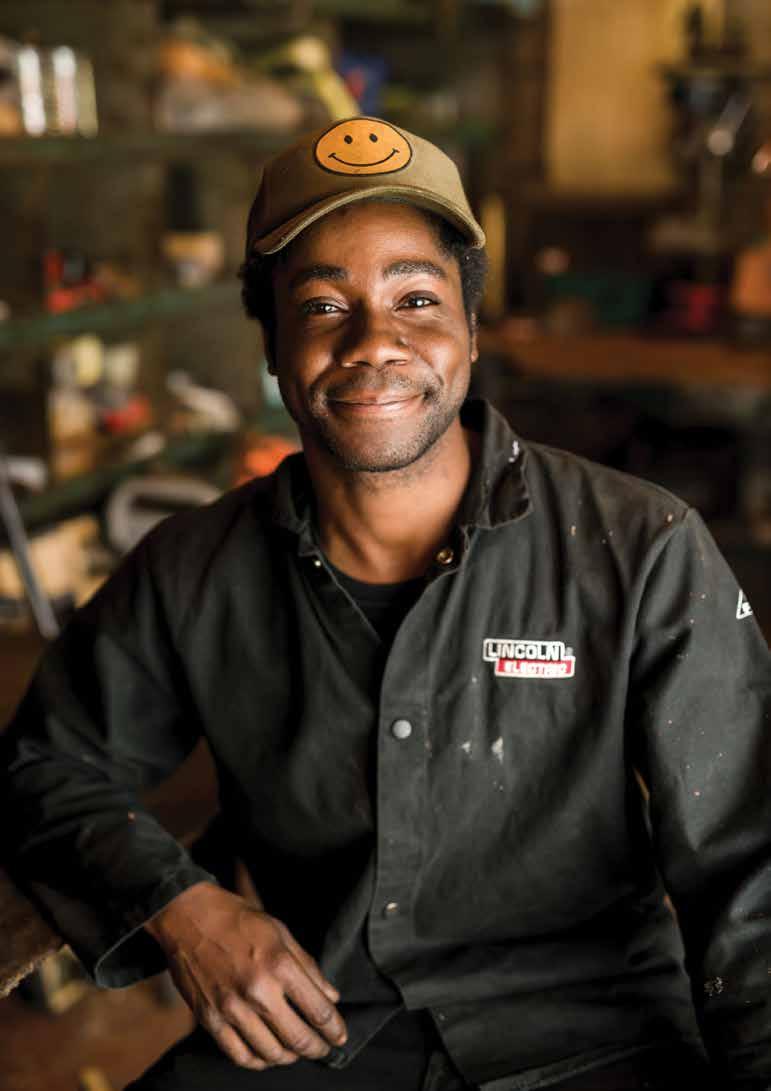
Ajene Williams in Birmingham Sculpture’s workshop after finishing the final metal pour of a new sculpture for the Gardens. Ajene’s artistry evokes profound contemplation through intricately carved textures, contours, and personalities. His work invites the viewer to see beyond the surface and discover hidden revelations.
OPPOSITE: Initial sketches and interpretations of the butterfly theme. Ajene’s goal was to design a piece that would spark joy and playfulness.
CLOCKWISE FROM TOP LEFT: In the foundry at Birmingham Sculpture, Joe McCreary and Ajene Williams pick up the crucible holding molten bronze. • The last drop of bronze is poured from the crucible into the ceramic mold. • Joe stirs and cleans out any impurities from the molten bronze. • The flaming forge heats the metal to 1,790 degrees Celsius/3,254 degrees Fahrenheit.• Forged butterfly wings and flower petals await final placement.

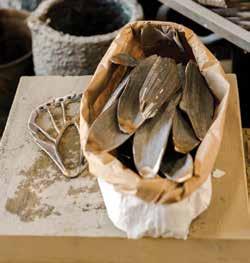
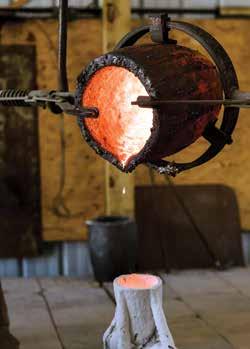
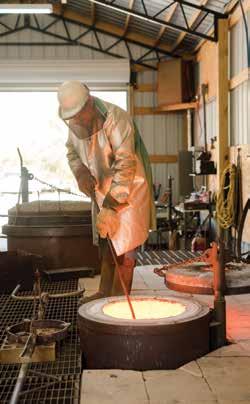

his work. “We all went to meet him and immediately knew that he was the one for the project. He just sounded so thoughtful, and his works left a profound impression,” said Molly.
It is no surprise that the Friends would be drawn to Ajene’s work and talents, as his artistic history and that of the Gardens are intertwined. In addition to training at the historic Sloss Furnaces, a central fixture of the Birmingham steel industry, Ajene follows a rich history of Birmingham metal sculptors. Cordray Parker, who created “Nike” in the Hill Garden, mentored Brad Morton, who has created several pieces for the Gardens—including “Pinecone” in the Southern Living Garden. Brad Morton, in turn, has mentored David Matson, who passed along his knowledge to Ajene early in his career.
“This special link of mentors and mentees was an opportunity for us to not only showcase future talent in Birmingham but also celebrate and acknowledge how we are connected to the Magic City,” said Molly.
As the seasons turn, so do the wheels of creation, spinning visions into sketches and dreams into designs.
Together, Ajene and the FBBG horticulture team envisioned a sculpture that could inspire feelings of playfulness, wonder, and discovery while also educating the public about pollinators and pollinator-friendly gardens and habitats. Molly created a graphic of different native plants that were ideal inspirations for the sculpture, including Purple Coneflower (Echinacea purpurea), Meadow Phlox (Phlox maculata), and Carolina Lily (Lilium michauxii)
“The piece needed to have verticality to it, to fit the space and serve as a focal point from the lower paths and adjoining gardens. It also needed to be durable, low maintenance, and designed/positioned in such a way as to not invite climbing, swinging, etc.,” said Molly.
Ajene began materializing those ideas into sketches, carefully studying the flowers that Molly had suggested. These ideas began to take many forms: a fairy-like child surrounded by butterflies, a caterpillar going through a metamorphosis, and finally a pollinator garden alight with butterflies.
“As I was making the sketches, I was mainly thinking about the shadow of the sculpture and how it would look—especially how the shadow of the butterflies would look from up high,”said Ajene.
He then created a maquette of the last sketch, a small model of the envisioned sculpture to show the intentions for the piece—a promise of things to come.
From creative visions to the artists’ hands, a sculpture emerges like a butterfly from its chrysalis
With an approved sketch and maquette in hand, Ajene began working on translating the intricate details and dimensions of the maquette into a larger, more durable sculpture.
For Ajene, sculpting is a harmony between hands and heart, showcasing the world’s profound truths that are often overlooked. He crafts each sculpture by hand, using methods of forging, casting, and welding. He believes hands are magic, capable of creating anything when guided by imagination. With hands as his tools and fire as his ally, Ajene poured his passion into the sculpture, a labor of love that spanned over a year.
For the smaller components such as the individual flowers and butterflies, Ajene shaped the molds directly from wax using his hands. “We can create anything with our hands if we can imagine it,” he said.
Ajene also used an array of tools to achieve the desired forms. “Anything can be a tool, really—sometimes I even use a toothbrush for texture, or to buff something back,” he said. For the larger pieces, Ajene enlisted the help of his friends and mentors, John Stewart Jackson and Joe McCreary at Birmingham Sculpture. Together, they worked to create the larger elements of the sculpture. The process began with the construction of rubber molds, which were used to create wax replicas of various components of the sculpture. After the wax hardened, Ajene carved intricate textures and shapes into the replicas.
The wax replicas were then used to make new molds. They were dipped into clay about nine times to create a thick ceramic shell around the wax. Airways known as gates were constructed for gas to escape during the pouring process.
The ceramic molds were fired in the kiln, causing the wax to melt away. This left behind a hollow ceramic mold ready to receive the molten bronze. Bronze was then melted in a furnace at 1,790 degrees Celsius/3,254 degrees Fahrenheit, poured into the ceramic molds, and left to cool. “With the bronze pieces made, all that was left was to cut off the gates, clean it up, and weld the pieces together,” explained Ajene.
Nestled in the Jemison Lily Garden, “Discovery” finds a home among a rainbow of daylilies, pollinator flowers, and butterflies.
On a sunny December day, Ajene, John, and Joe made their way from Birmingham Sculpture down to the Gardens, their pickup truck laden with the carefully crafted pieces of the sculpture.
“The piece needed to have verticality to it, to fit the space and serve as a focal point from the lower paths and adjoining gardens.”
—MOLLY HENDRY
With the assistance of the Friends’ Gardens Support team and city staff, the trio cleared the designated area, removed pine needles, dug holes, and carefully planted the sculpture pieces into freshly poured cement.
Placing the sculpture was only one part of a weeklong process. In the days that followed, Ajene, John, and Joe worked in perfect harmony to enhance the sculpture’s final appearance. Joe wielded a blowtorch, carefully heating the bronze so that John and Ajene could evenly apply liver of sulfur, a chemical compound that oxidized the metal. This process created a patina, deepening the color of the bronze. Then, they waxed the metal to neutralize the sulfur and seal it from erosion.
After achieving the desired darkening effect, the team turned their attention to highlighting other areas, polishing them to a gleaming finish, and carefully examining the sculpture for color, texture, and structural integrity. “It has been a beautiful journey to create this,” said Ajene.
Though the sculpture was the centerpiece of this creative placemaking project, there was still one important final step to be done: planting the garden bed around it. Keith Turney, senior horticulturist for the Kaul Wildflower Garden, led the efforts to plant a pollinator garden around the sculpture that would not only complement the installation but also serve as a vital habitat for pollinators year-round.
“The idea was to have the sculpture come to life. We thought planting a pollinator garden would enhance the experience for visitors,” said Keith.
To create a pollinator garden that would support butterflies throughout each of their various life stages, Keith sought
to include a mix of nectar-producing plants as well as host plants. Butterfly host plants are specific plant species that provide food and habitat for butterfly larvae, or caterpillars. These plants are essential for the survival and reproduction of butterflies, as the larvae feed exclusively on them.
“For example, monarchs only lay their eggs on milkweed, because they’ve evolved the ability to resist its toxicity, and use it as food,” said Keith. “In these sorts of relationships, various insect and plant species are interconnected and depend on one another for survival.”
The plant selection process was meticulous. Keith considered factors such as a plant’s sun requirements, bloom time, and height. “We did not want to take anything away from the sculpture, so we searched for plants that did not exceed the sculpture in height,” he said. Many of the plants for the garden were carefully grown by Keith and the Native Plant Volunteer Group—a true community effort.
Color was another key consideration. The color of a flower can be considered a part of its “pollinator syndrome,” which is how we describe the different traits that have evolved to attract a specific type of pollinator. This may include bees, butterflies, birds, or even bats! Bees, for example, are attracted to blue and purple flowers, while butterflies are drawn to red, orange, pink, and purple hues. These colors signal the presence of nectar and pollen, guiding pollinators to the flowers for feeding and pollination.
“Pollinators all have an enhanced sensitivity to certain spectrums of light, and so the flower’s color is what draws them in. Funny enough, that is what draws us in as well,” said Keith.
With the dedicated support of volunteers, the Friends
applies liver of sulfur to the areas of sculpture he wishes to darken. He then waxes the metal to neutralize the sulfur and
(far left), John Stewart Jackson, and Joe McCreary work on installing the sculpture.

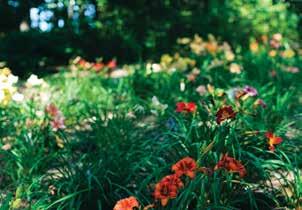

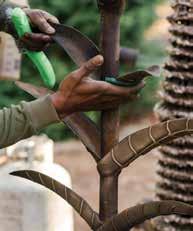
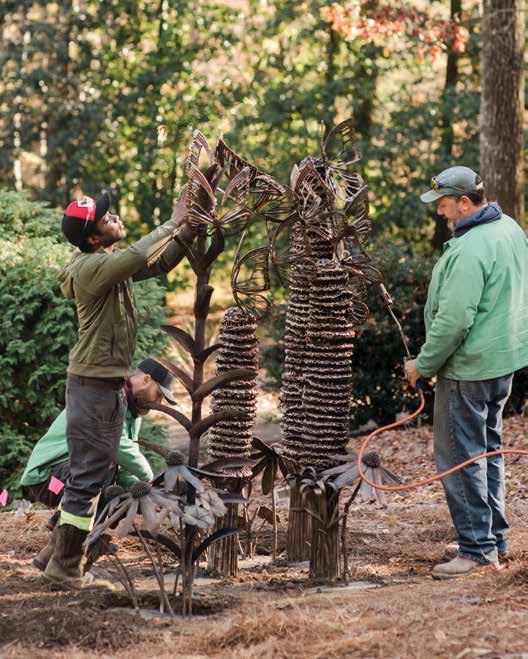
RIGHT: The sculpture captures the movement of butterflies while incorporating various native plants that are nectar and pollen sources for pollinators and host plants for butterflies, including Alabama’s native lily, Carolina Lily (Lilium michauxii). BELOW: Senior Horticulturist for the Kaul Wildflower Garden Keith Turney (middle) poses with two volunteers, Jan Street (left) and Harriet Hackney (right). With Keith’s leadership, volunteers helped plant over 400 plants for the pollinator garden surrounding the sculpture.
BELOW RIGHT: (from left to right) Sonya Jackson, Joanne Shaughnessy, Bob Koons, and Keith Turney work together to install the pollinator garden. They planted 21 different species of plants including Purple Coneflower (Echinacea purpurea), Spotted BeeBalm (Monarda punctata), Eastern Columbine (Aquilegia canadensis), Black and Blue Salvia (Salvia guaranitica ‘Black and Blue’), Aromatic Aster (Symphyotrichum oblongifolium) and Common Yarrow (Achillea millefolium).
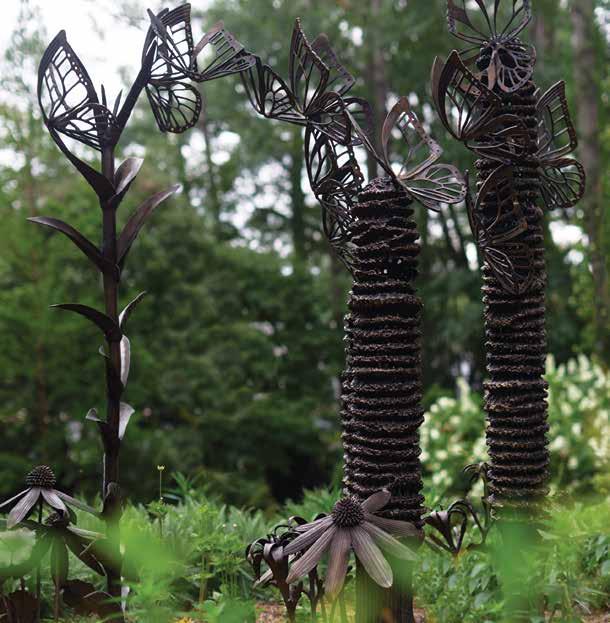
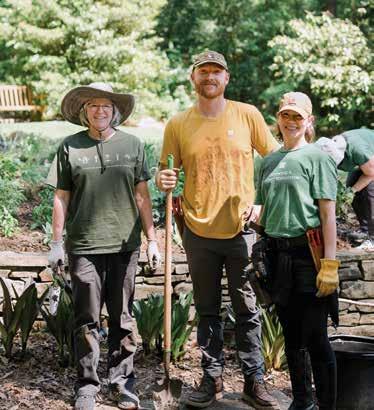
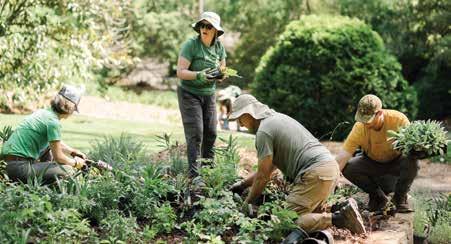
“Pollinators all have an enhanced sensitivity to certain color is what draws them in. Funny enough, that is what
planted over 400 plants to inaugurate the pollinator garden. They plan to continue adding more to it in the future. “Ultimately, we hope to create a haven for a diverse set of butterflies and other pollinators, and show how plants and pollinators interact,” said Keith.
By integrating art, culture, and garden design, and by inviting partnerships with people from diverse sectors, the creative placemaking process of this sculpture strengthens our connection to the Jemison Lily Garden and to one another.
Nature is woven by the interconnectedness of each living creature, plant, and element—each thread playing a vital role in the harmony of the whole. Pollinator gardens are a perfect illustration of this relationship where flowers and insects depend on each other for survival, creating a balance that sustains life. In this light, “Discovery” is not just about adding beauty to the landscape but also celebrating the web of our own interconnected lives.
From its inception, the process of creating this beautiful, new garden space has been one of collaboration. The horticulturists who inspired the original design, the sculptor, his team, and the volunteers who helped plant the garden have all contributed to making a space that will enrich and benefit our community and the surrounding natural environment. “Discovery” breathes new life into the Gardens and will inspire wonder for generations to follow.
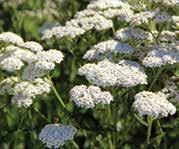

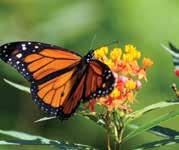
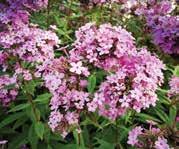
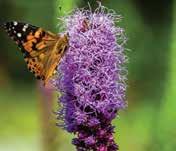
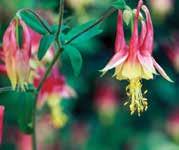
What primarily attracts butterflies to nectar sources goes beyond the color of the flower—the shape of the flower matters most. Butterflies are attracted to flowers that have large petals that serve as a landing pad for them to access the nectar. They are also attracted to flowers that grow in clusters, where they can land and enjoy multiple feasts. Flowers with slender tubes are also favored, allowing butterflies to insert their proboscis (tongue) to reach the nectar.
1. COMMON YARROW (Achillea millefolium) provides a flat-topped structure with small flowers clustered together, making it easy to land on. The flowers are white, pink, or yellow, inviting butterflies to partake in their nectar.
2. MEADOW PHLOX (Phlox maculata) is a native perennial plant, and has short, narrow nectar tubes, making the nectar available for only longtongued insects including butterflies.
3. PURPLE CONEFLOWER (Echinacea purpurea) is a native plant, named for the spiny cone-shaped flower center encircled by slender petals. Its large petals are excellent for landing, giving butterflies and other pollinators moments to rest while accessing nectar. (Photo credit: Graham Yelton)
4. BLAZING STAR (Liatris spp.) is a beacon to butterflies and other pollinators. The native plant blooms in late summer and early fall, providing late-season nectar. (Photo credit: Jeffrey Hamilton)
spectrums of light, and so the flower’s draws us in as well.” —KEITH TURNEY
5. MILKWEED (Asclepias) is a critical host plant for butterflies because it is the sole food source for monarch caterpillars. It also contains toxins that make monarchs unpalatable to predators, providing essential protection during their life cycle.
6. EASTERN COLUMBINE (Aquilegia canadensis) is a native perennial wildflower that is easy to grow and attracts a wide range of pollinators, including hummingbirds. In addition, it is the sole host plant for the columbine duskywing butterfly.
OCTOBER 3 - 6, 2024

We are delighted to announce the arrival of our two summer interns: Native Plant Intern Ellie McAfee and Ornamental Horticulture Intern Macy Hartsell.

ELLIE MCAFEE
2024 Native Plant Intern

2024 Ornamental Horticulture Intern
presenting sponsor M c CORQUODALE TRANSFER
design sponsor LEE JOFA benefiting FRIENDS
Ellie is a rising senior at the University of West Alabama, majoring in conservation and field biology. She currently works at the UWA Herbarium as a specimen mounter and filer and enjoys contributing to the Alabama Plant Atlas. “I have a deep love for Alabama’s native flora, and am looking forward to helping educate others,” she said. “I am so excited to spend the summer learning and working with the Friends of Birmingham Botanical Gardens, but I am more excited to share what I learn with those around me!”
Macy is a rising senior at Mississippi State University, completing a Bachelor of Science degree in horticulture. She participates in Horticulture Club and is on the executive board of the Mississippi State Women’s Rugby Club. She has worked at the Sarah P. Duke Botanic Gardens in Durham, N.C., and at Leaf & Petal in Birmingham. “I am so excited to work in the gardens this summer to further my passion and education for all things plantrelated,” she said.
“I am so excited to spend the summer learning and working with the Friends of Birmingham Botanical Gardens, but I am more excited to share what I learn with those around me!” —ELLIE MCAFEE
Our summer interns not only lend a hand during our busiest season, but also gain valuable hands-on experience to supplement their studies, develop skills, and gain experience that helps to shape the green leaders of tomorrow. We are grateful to the Friends of Birmingham Botanical Gardens Junior Board, the Shades Valley Rotary Club, and our individual and corporate sponsors.

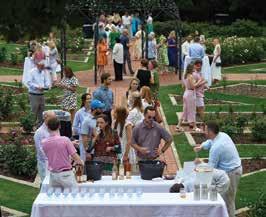
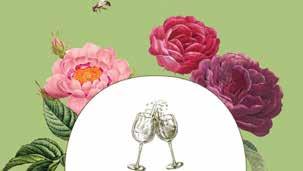
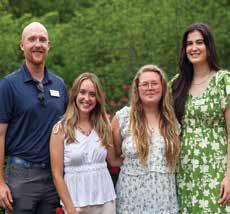
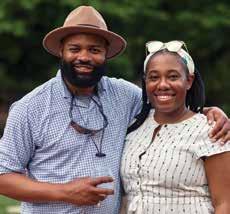


The Friends of Birmingham Botanical Gardens Junior Board hosted a successful Rosé in the Roses event on May 7, raising funds for our summer internship program through sponsorships, ticket sales, and in-kind support. Presented by Shoal Creek Properties in the stunning Dunn Formal Rose Garden, the fundraiser featured rosé provided by Finch Fine Wines, floral arrangements created by the Junior Board, and live music amid the roses in bloom. The Junior Board extends its sincere gratitude to all who attended and support our internship program, which gives college students the opportunity to gain practical experiences toward a career in public horticulture.
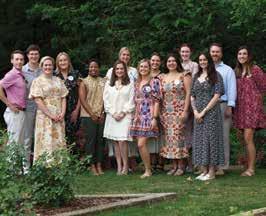



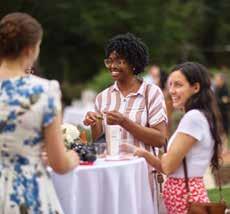
FOLLOWING SPONSORS!
THANK YOU TO THE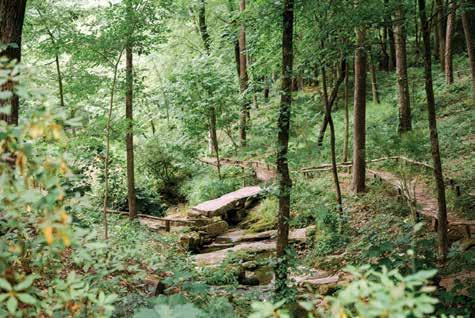
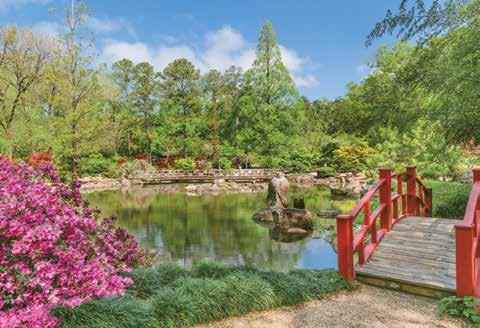
1. CREATING A BACKYARD WILDLIFE HABITAT
Wednesday, June 12 | 9–10:30 a.m.
Location: Conference Room
Learn about how Master Gardener Peggy Thompson created a certified backyard wildlife habitat at her home. Gain insights into the essential considerations for planning and nurturing a thriving ecosystem in your own backyard. This class includes an inspiring walk through the Kaul Wildflower Garden’s new “living bird feeder” with Friends’ Senior Horticulturist Keith Turney.
Cost: $30 (Members) | $35 (Nonmembers)
2. THE FOUR ELEMENTS OF JAPANESE GARDEN DESIGN
Friday, June 14 | 9–10 a.m.
Location: Japanese Garden
Immerse yourself in the serenity of the Japanese Garden with Friends’ horticulturist Julia Adams. Delve into the four fundamental elements of Japanese Garden design (plants, rock, water, and ornament) while surrounded by the beauty of nature in this outdoor class.
Cost: $20 (Members) | $25 (Nonmembers)
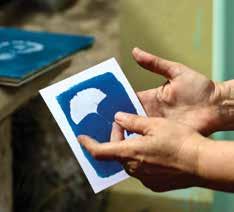
3. CYANOTYPES: BLUEPRINTS FROM NATURE
Tuesday, June 25 | 1–2 p.m.
Location: Garden Lab
Join Alecia Martinez from Studio by the Tracks for a maker’s workshop to create your own cyanotype prints. This photographic technique produces stunning indigo-colored images on paper, offering a unique way to capture the beauty of nature without a camera! Rain date is Tuesday, July 2 | 1–2 p.m.
Cost: $30 (Members) | $35 (Nonmembers)
4. CULTIVATING THE PRACTICE OF NATURE OBSERVATION
Friday, June 28 | 10–11:30 a.m.
Location: Conference Room
Join teaching artist Melissa Shultz-Jones for a workshop on phenology, the study of natural events in relation to seasonal and climatic changes. Engage in a creative approach to nature observation and document your observations during a guided garden walk.
Materials: Please bring a small watercolor notebook that opens flat. All other supplies are provided. No artistic skills required!
Cost: $35 (Members) | $40 (Nonmembers)

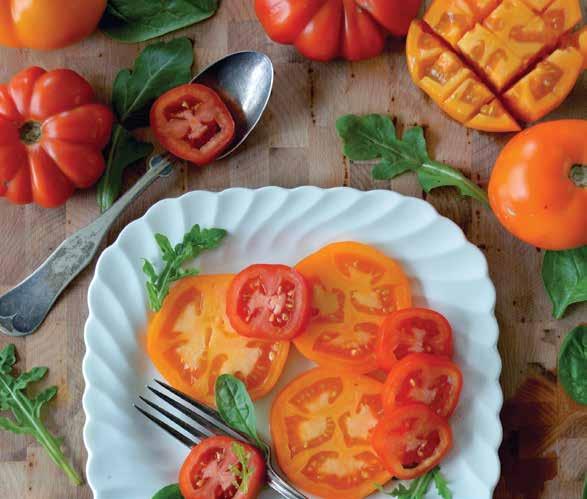
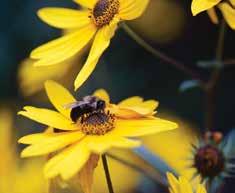

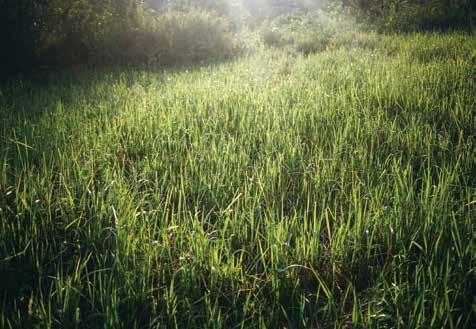
Grow your green thumb & explore the Gardens’ summertime wonders by joining us for these fun & educational offerings.
Learn more & register at bbgardens.org/ classes
5. TOMATO TROUBLESHOOTING AND TASTE-TESTING EXTRAVAGANZA!
Wednesday, July 10 | 11 a.m.–12:30 p.m.
Location: Hodges Room
Bring your best-tasting homegrown tomato and participate in a blind taste test to determine the most delicious variety! Join Chilton County Alabama Cooperative Extension Agent David Lawrence as he shares insights and tips to keep your tomato plants healthy.
Cost: $30 (Members) | $35 (Nonmembers)
6. WHAT ABOUT NATIVE BEES?
Thursday, July 25 | 11 a.m.–noon
Location: Conference Room
Discover the fascinating world of native bees with Dana Hazen, director of planning, building, and sustainability for the City of Mountain Brook. Learn about the vital role these bees play in sustaining native plant and pollinator communities in our region.
Cost: $20 (Members) | $25 (Nonmembers)
7. BEYOND THE ROOF: PREVENTING WATER POLLUTION FROM YOUR YARD
Tuesday, July 23 | 11 a.m–noon
Location: Conference Room
Join Hana Berres, education and training coordinator with Jefferson County Storm Water Management, to learn practical strategies for preventing water pollution from your property. Discover how managing stormwater can protect nearby creeks, streams, and drinking water resources.
Cost: $20 (Members) | $25 (Nonmembers)
8. SUMMER LAWN CARE AND TURF ALTERNATIVES
Thursday, August 1 | 11 a.m.–noon
Location: Conference Room
Lawns are a beautiful element of landscaping but require considerable maintenance. Join expert Talladega County Extension Agent Jacob Turner to learn how to care for your lawn and explore sustainable turf alternatives.
Cost: $20 (Members) | $25 (Nonmembers)

9. BENEFICIAL INSECTS VS. GARDEN PESTS
Tuesday, August 6 | 11 a.m.–noon
Location: Conference Room
Before taking action against insects in your garden, learn to differentiate helpful insects from pests! Join Regional Extension Agent Bethany O’Rear to learn effective pestmanagement strategies.
Cost: $20 (Members) | $25 (Nonmembers)
10. CREATING DRIP IRRIGATION FOR CONTAINERS AND RAISED BEDS
Monday, August 12 | 9–10:30 a.m.
Location: Garden Lab
Make the task of watering numerous container plants and raised beds easy and efficient in this hands-on workshop with Dani Caroll, Regional Extension Agent for home grounds, gardens, and pests. Dani makes doing the work of gardening fun!
Cost: $35 (Members) | $40 (Nonmembers)

12. STORYTIME AT THE GARDENS
Fridays | 10 a.m. | Location: Southern Living Garden (weather permitting)
Cost: Free with registration
Bring your little one to enjoy a story followed by a nature activity, all while being surrounded by the beauty of nature. This program is designed to promote a love of reading, creativity, and gardening.

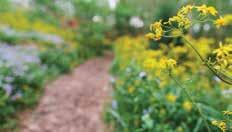
11. ALABAMA DROUGHT TOLERANT LANDSCAPES
Tuesday, August 20 | 11 a.m.–noon
Location: Conference Room
Learn essential strategies for planning and implementing a water-efficient landscape in Alabama’s summer heat. Join Regional Extension Agents Bethany O’Rear and Jacob Turner to explore drought-tolerant landscape plants perfect for your garden.
Cost: $20 (Members) | $25 (Nonmembers)
A wonderful resource for nature enthusiasts, families, and anyone who would like to learn more about gardening. Bring your Jefferson County library card to check out books. Visit the Library 9 a.m.–4 p.m. on weekdays.
THYME TO READ A monthly book club Select Tuesdays | 4:00 p.m.
Location: Library at the Gardens
Free and open to the public
Tuesday, June 4
Late Migrations: A Natural History of Love and Loss by Margaret Renkl
Tuesday, July 2
The Woods of Fannin County by Janisse Ray
Tuesday, August 6
Gardening Can Be Murder: How Poisonous Poppies, Sinister Shovels, and Grim Gardens Have Inspired Mystery Writers by Marta McDowell




Put your knowledge of Alabama’s flora and fauna to the test!
AT
7–9 p.m.
$15 (Members) | $20 (Nonmembers)

RESERVE YOUR SPOT AT BBGARDENS.ORG/TRIVIA
Tuesday, June 11 | Tuesday, July 9 | Tuesday, August 13 | 7–9 p.m
Location: Rushton Garden
Put your knowledge of Alabama’s flora and fauna to the test with naturalist Henry Hershey. Enjoy complimentary drinks and compete for a chance to win a prize.
Cost: $15 (Members) | $20 (Nonmembers)
STEM TEACHER INSTITUTE
Thursday, June 20 and Friday, June 21 | 8 a.m.–5 p.m.
Location: Garden Center
Check In: Located in the Ireland Room
Join other K-6 educators in our region to explore STEM in the context of nature and the outdoors. Keynote and breakout sessions will center around gardening, sustainability, nature study, and our state-wide STEM curriculum “Cultivate.” Participants will engage in an immersive experience at the Gardens, including personal restoration and a guided tour. Our program is designed to benefit public, private, and homeschool educators.
Cost: $50
BIRMINGHAM FERN SOCIETY 2024 FERN SALE
Saturday, June 15, 10 a.m. – 2 p.m.
Offering a variety of ferns for southern gardens, the ever-popular annual Fern Sale will be held in the holding bed above Fern Glade at Birmingham Botanical Gardens. Shuttle service will be available from the Garden Center Plaza. Featuring 55 diverse species, including 20 natives, with prices ranging from $8–$16. Check or cash only (no credit cards).
TANABATA FESTIVAL
Saturday, July 6 | 9 a.m.–noon
Join us for Tanabata, a Japanese festival celebrating the alignment of two stars normally separated by the Milky Way. Hosted in partnership with the Japan-America Society of Alabama and the Friends of Birmingham Botanical Gardens, we invite you to hang a special wish on tanzaku (colorful paper strips) in our Japanese Garden. During the celebration, enjoy a tea ceremony demonstration by Urasenke Birmingham Association and the beautiful bonsai display by Alabama Bonsai Society!





FOR AGES 4–12
MAY 28– JUL Y 26, 2024
Give your child a chance to expl ore the Garden’s summertime wonders. Wit h fun t hemes like Nature’s Kitchen, Art in the G ardens, Water Wonders—and more— o ur half-day summer c amps are designed to promote creativ ity and the joy of discovery in the beautiful setting of Birmingham Botanical Garde ns.
M e m bers of the Fr iends of Birmingham Bo ta nical Gardens receive pr iority r egistration and discounts on camp reg istrations.
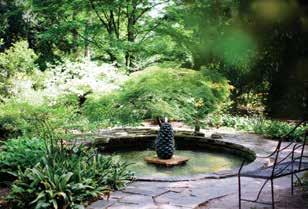
JOIN OUR PERENNIAL LEGACY GIVING CIRCLE
You can help us perpetuate the wonders of Birmingham Botanical Gardens and all that it means to our community and region by including the Friends of Birmingham Botanical Gardens in your planned giving. Every gift makes an impact. Please consider designating the Friends as a beneficiary of your estate through your will, charitable trust, or retirement beneficiary designation. We are grateful to all who have made this special commitment. Please join them in supporting and protecting this beloved community resource. Call Director of Development Penney Hartline at 205.414.3950, ext. 103, to learn more.
THE PERENNIAL LEGACY GIVING CIRCLE
As of April. 30, 2024
Recognizing those who have made or pledged a planned gift
Mr.* & Mrs. Edgar G. Aldridge
Mr. & Mrs. Michael Balliet
Ms. Camille A. Becker
Mrs. Lucille S. Beeson*
Peggy Bonfield & Orrin Ford*
Ida C. & D. Joseph Burns*
Mr. & Mrs. Arthur I. Chenoweth*
Mary Carolyn Gibbs Cleveland
Suzanne G. Clisby
Dr. & Mrs. D.C. Coston
Mrs. Martha Stone Cobb Daniel*
The Daniel Foundation of Alabama
Dr. L. Aubrey* & Elizabeth Drewry
The Dunn-French Family
Dr. John D. Elmore*
Martha B. & Robert L. Eskew*
Mrs. Trudy Evans
Mr. & Mrs. Wally Evans
Mrs. Claire H. Fairley*
Bernadine Rushing Faulkner
Mr. F. Lewter Ferrell, Jr.*
Dorothy Ireland Fletcher*
Dr.* & Mrs. Charles P. Grant
Patti Hammond
Jody & Don Hamre*
Penney & Roger Hartline
Mr. R.R. Herbst*
Mrs. Jimmie Hess*
Mr. J. Ernest Hill & Mrs. Ora Lee Hill*
Mrs. Jane Hinds
Fay B. Ireland*
Dr. Susan Jackson
Mr. George L. Jenkins
Virginia Goodall Johnson*
Bobbe & Hugh Kaul*
Ms. Pamela Kaul*
Fran Lawlor
William Brock Lewis
Dr. Bodil Lindin-Lamon*
Hope Long
Dr. Michael E. Malone
Annie Lee Buce Matthews*
Ms. Louise T. McAvoy*
Douglas A. & Linda P. McCullough
Margaret H. McGowan*
Anne & Ira Mitchell
Mrs. Mary Jean Morawetz
Mr. Philip Morris*
Thelma Vaughan Mueller*
Mr. & Mrs. Fred W. Murray, Jr.
Don & Pat Nelson
Dr. James L. Newsome*
Dr. & Mrs. A. I. Perley*
LeAnne* & Steve Porter
Mrs. Carol P. Poynor
Mrs. Dorothy L. Renneker*
Deborah & John Sellers
Sandra S. Simpson
Mr. & Mrs. William M. Spencer III*
Frederick R. Spicer, Jr.
Mr. Douglas Arant Stockham
Janet & Jarry Taylor
Dr. Wendell H. Taylor, Sr.*
Mrs. Barbara D. Thorne*
Dr. & Mrs.* Jack W. Trigg, Jr.
Mrs. Carolyn D. Tynes*
Mrs. Ann H. “Nancy” Warren*
Mrs. Robert Wells
Anonymous (3)
*Deceased
Thank you for your support!
We sincerely appreciate your generous support, as every contribution can have a significant impact! There are so many ways you can participate: membership, annual donations, memorials and tributes, legacy giving, as well as by volunteering, shopping our plant sales, and joining us for an education program or special event. Thank you for helping to sustain this community treasure. Looking forward to seeing you around the Gardens this summer! —Penney Hartline, Director of Development
February–April 2024
Richard Cybulsky
Barkley Square Garden Club
Integrative Therapies, Inc.
Mike Rushing
Forest Park Garden Club
FBBG Education Department
Mountain Park Garden Club
Peggy Thompson
Trussville Garden Club
Keith Turney
Greystone In-The-Gates Garden Club
February–April 2024
Thomas “Tommy” Gilbert
Amason, Jr.
Mary & Martin Beasley
Walker Percy Badham III
Will & Sally Legg
Nancy Bennett
Dona & John Musgrave
Ann Abernathy Benton
Forest Park Garden Club
Mrs. Shirley K. Osband
Paula & Mike Rushing
Mr. & Mrs. Charles Smith
David Dean Blount, Sr.
Ms. Sara S. Crook
Nancy Harned Coppage
Village Garden Club
Hayden Hope Doores
Mr. & Mrs. Miles Walding
Martha Bonner Eskew & Robert L. Eskew, Sr.
Mr. & Mrs. John R. Eskew
Ann Calisto Geisinger
Norm Geisinger
Joyce Winston Glass
Elaine & Marty Glass
Joan & Ralph Holzman
Mr. Bruce Holzman & Ms. Kathy Urbach
Scott Jaffe
Agudath Israel Etz Ahayem
Mr. & Mrs. Richard Cohn
Ms. Judith M. Cone
Shirley & Ron Froehlich
Mr. & Mrs. Randy Miller
Dr. & Mrs. Stuart J. Padove
Ms. Sara Schreibman
Ms. Deborah A. Shevin
Diane & Howard Slaughter
Mr. & Mrs. Leon Taranto
Missy & Harry Witt
Jerry Anne Nelson Johnson
Mr. & Mrs. Robert T. Agnew, Jr.
Mrs. Susan P. Dobbs
Mr. & Mrs. Warren L. Nash
Lori & Don Sullivan
Charles “Chuck” Robinson Katholi, Sr.
Philippe W. Lathrop & Judith S. Crittenden
Dona & John Musgrave
Jack Howard Krueger
Laura Susan & Tommy Roberts
Anne-Katrin Krueger
Edgewood Elementary Family
Henry Horton Little, Jr.
Valley Offshoots Garden Club
Chris Moore
Dona & John Musgrave
Frances Blackwell Robinson
Mary & Jamie French
The Noojin Family
Bari Mazer Roseman
Mr. Evan Brooks Roseman
William “Bill” Mayfield Slaughter
Peggy & Michael Balliet
Thelma Nunnelley Stichweh
Barbara J. Burke
Fredrick Michael “Mike” Tuttle
Anonymous
by Graham Yelton


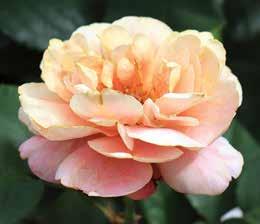
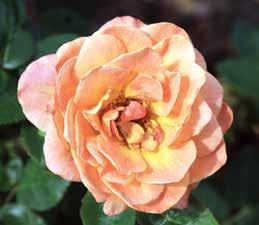

A centerpiece of the Birmingham Botanical Gardens, the Dunn Formal Rose Garden is a glorious marvel throughout the warmer months and into fall. The profusion of color; the lovely, ethereal scents floating on the breeze; and the symmetry of the garden design all transport the senses into the sublime. This past spring, thanks to generous donors, in collaboration with the Birmingham Rose Society, the Friends planted 466 new roses in the garden. Here are a few of the different varieties, including some award-winning roses to look out for as you stroll the garden paths.
1. HYBRID TEA: ‘Veteran’s Honor’
Rosa ‘Veteran’s Honor’ (Rose Hall of Fame 1981)
One of the most popular varieties of roses, hybrid tea roses feature a single bloom for every long stem, with an upright growing habit— ideal for cutting. The large, ornate blooms with 25 to 30 petals create a dazzling display in any garden. ‘Veteran’s Honor’ flourishes a deep, velvety red and has a light raspberry scent.
2. GRANDIFLORA: ‘Love’
Rosa ‘Love’ (AARS Winner 1980) All-American Rose Selections Grandifloras present elegant, showy blooms in cycles of six to seven weeks at a time. Their shrubs are larger and stand taller than hybrid teas, but the flowers are slightly smaller and produce a spray of blooms on each stem. Hardy and vigorous, grandifloras are popular for filling a landscape with color. Rosa ‘Love’ is a cultivar developed by William Warriner and was named an All-America Rose Selections winner in 1980. It’s a medium-tall shrub, and the blooms are scarlet red with a silvery reverse and carry a mild fragrance.
3. FLORIBUNDA: ‘Rosie the Riveter’
Rosa ‘Rosie the Riveter’ (AARS Winner 1996) All-American Rose Selections Floribunda roses have large clusters of medium-size blooms that cover the bush continuously all season long. This cultivar sports
lavish blooms in a distinctive shade of deep orange suffused with pink, and a medium fruity, almost spicy fragrance.
4. SHRUB: ’Lady of Shalott’
Rosa ‘Lady of Shalott’ (AGRS Winner 2017) American Garden Rose Selections Shrub roses tend to sprawl wide and large, up to 15 feet every direction. Able to withstand harsh winters, shrub roses are notable for their hardiness. Their blooms are produced in bountiful clusters, opening to apricot-orange flowers with a golden-yellow reverse.
Rosa ‘Lady of Shalott’ is an apricot-orange cultivar bred by British rosarian David C. H. Austin. It was awarded the Royal Horticultural Society’s Award of Garden Merit in 2012 and the American Garden Rose Selections award in 2017. A medium-size shrub with medium size blooms, it has a strong, fruity, clove fragrance.
5. MINIATURE: ‘Sunblaze Lemon’
Rosa ‘Sunblaze Lemon’
A form of the hybrid tea or grandiflora rose, miniature and miniflora roses feature much smaller blooms, under 2 inches wide, but still showy and fragrant. While the flowers and leaves remain proportionally smaller, miniature rose shrubs can grow 2 to 3 feet tall. They bloom profusely throughout the season and have a mild, citrusy, damask fragrance.

2612 Lane Park Road Birmingham, Alabama 35223
205.414.3950 bbgardens.org
Thank you for your commitment to this community treasure. Your support is vital for the Gardens and those we serve. Please renew or upgrade your membership at bbgardens.org/membership.
A daylily (Hemerocallis) is a summertime staple in a southern garden, with thousands of different varieties to choose from. Although their blooms only last a day, they pack a colorful punch.
